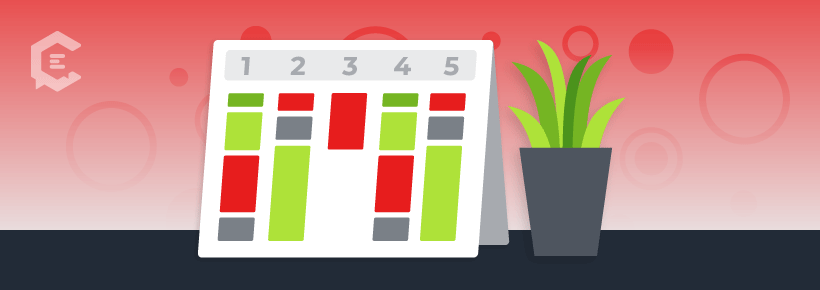“Where did the day go?” “I spent all day in my pajamas.” “I have no life outside of work.”
If any or all of those sound familiar, you’re a typical freelancer. You get entrenched in deadlines or you fall into a slump during slow periods and your waking hours seem to just rapidly dissolve. Or, worse yet, they drag on and you feel unproductive and dull. The life of a freelancer isn’t for everyone. Discipline is required.
Time-blocking — starting the day with an hour-by-hour plan for how you’re going to fill the hours ahead — can be a great way to deliver on your assignments and still have time left to be a real person and enjoy aspects of life beyond work.
What is time-blocking?
Think of your waking hours as if they are a television schedule — not a marathon of “Friends” re-runs or police chases, but a channel line-up that has some variety — intense work programming, something fun and light and maybe even an exercise or home shopping show. No drama, please!
Map out everything, from free time to bathroom breaks.
Using your medium of choice (old school pen and paper or environmentally friendly digital calendar), map out how you’re going to spend every hour of the day.
Allow time for “doing nothing” or build in some flex time for that unexpected client phone call or bathroom/snack breaks. As with any to-do list, be realistic; aggressive but not overly ambitious.
Stick to the schedule!
Do your best to start and stop according to plan. That said, you may need to make modifications throughout the day, but simply re-organize the day (or move activities that are not time-critical off the list). The more you time-block, the easier sticking to your “dayparts” becomes.
Become a little Pavlovian.
Dogs and humans need a little treat when they’ve behaved according to plan. Slotting activities you enjoy into your dayparts is a great way to keep on track.
If you’re disciplined, you can add them midday (e.g., “Take myself out for brunch after drafting a heinously boring white paper”). Otherwise, stack them at day’s end (e.g., “Go out with my friends for happy hour at exactly 5 p.m.”). Having something to look forward to after completing a task will motivate you to finish on time.
If you’re super-serious about time-blocking or don’t trust yourself as a time-keeper you can set an alarm or program your smart device to remind you when to take your fingers off the keyboard.
The short- and long-term benefits of time-blocking
Time-blocking has varied benefits, including:
- You ultimately become more productive at work because you give yourself hard-stop limits.
- You have time committed to doing fun and relaxing things. That boosts productivity.
- You plan for and make time to do those tasks and projects that you may think you’ll never accomplish.
- You can look back at the end of the day and feel like you had a varied and perhaps useful day.
Hopefully, you won’t need to schedule “get out of pajamas” or “take a shower” in your time-blocks, but I have been known to plan out personal grooming when my work schedule gets intense.
Whatever helps you get control, smell good and do a better job should be part of the blocks. After all, having some say over how we spend every day is why we do what we do!






